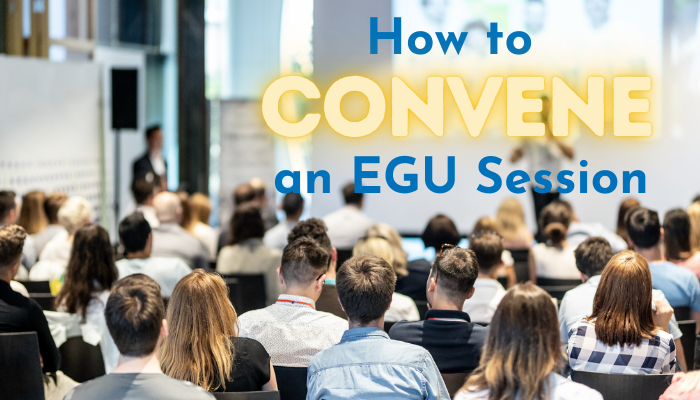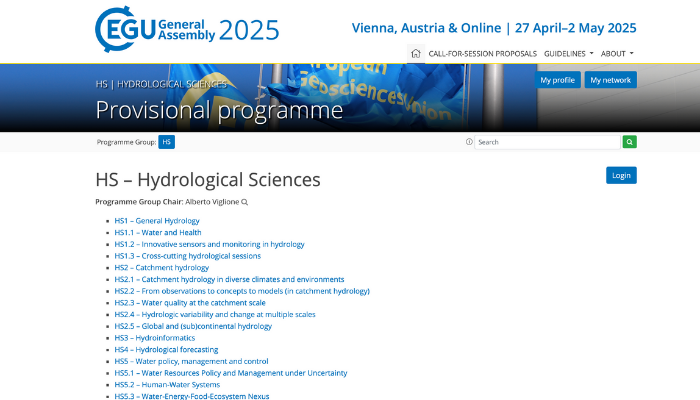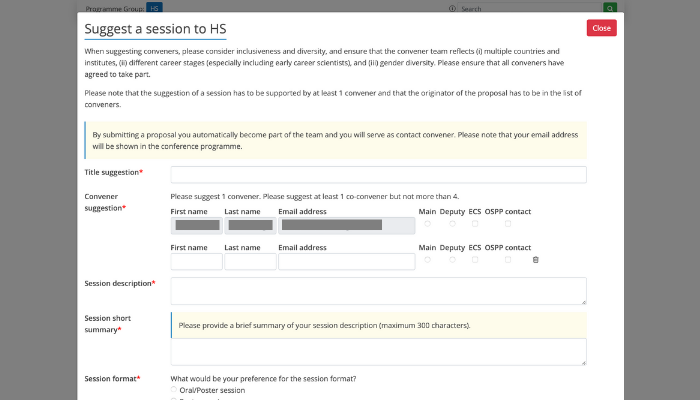
Have you ever thought about convening an EGU session instead of just attending them? Until September 9th you have the chance to do just that for the 2025 General Assembly, which will be taking place from April 27 to May 2 in Vienna, Austria.
Convening a session can sound a bit intimidating, especially if you’ve never done it before or if you are an early career scientist. However, it’s an incredibly enriching experience and well worth the effort. Here is everything you have to know.
1 – Find a Topic and Co-Conveners
First off, you need to settle on a topic and find your co-conveners, i.e. the team who co-organizes the session with you before and during the conference.
Has there been a field you’ve been working in that hasn’t seen a lot of exposure at the EGU General Assembly, but would be a perfect fit? Do you already know people who work on similar topics who could be interested in submitting an abstract?
That’s the ticket. But keep in mind: A scientific session should be of broad interest and aim to bring together scientists who are not already linked, e.g. via a European research project
As for your co-conveners, you can build a team of up to four people with whom to propose your session. These are typically your collaborators or colleagues you know who work in the same field but cover different aspects of the topic and come from diverse institutions.
Once you have an idea for a topic, check out the provisional programme to see if anyone else has already submitted something similar. Some convener teams propose the same session every year. Other sessions are one-offs that may be happening one year but not another.

If your session idea is unique, you can go ahead and draft your proposal. But what if it isn’t? What if someone else has already proposed a similar session? In that case, you can reach out to the conveners and express your interest in joining their team. In many cases, conveners will be happy to have additional members on board who can promote the session among their networks.
Submit Your Session Proposal
Before you submit your proposal, you need to read the convener guidelines. They’ll tell you exactly how long a proposal needs to be and what elements it should include. Plus, they’ll give you solid insights into the general rules and restrictions, such as the fact that you can’t submit an abstract to your own session.
Once you are ready, you can submit your session proposal via the EGU25 website. Heads up, you and your co-conveners will all need a Copernicus ID!
After you’re logged in, start the submission process by selecting your session type, then choose the topic sub-group. Next, add details – your session’s title, description, short summary, and conveners. You’ll also be asked who is the main and the deputy convener in your session, and who will assign judges if any of your submitting authors want to participate in the Outstanding Student and PhD candidate Presentation (OSPP) awards. Finally, you’ll have to give details on whether the session is co-sponsored by another division (e.g. hydrology and geomorphology), and if you plan to create a special issue in an EGU journal.

Once you have clicked the submit button, keep your fingers crossed and wait for the notification on whether your session has been accepted (late October or early November). Most sessions are accepted at this stage!
Promote Your Session
After your session has been accepted, it’s key to promote the heck out of it, especially if it’s a brand-new topic.
Harness social media, mailing lists, and your own academic networks and those of your co-authors. Creating an eye-catching graphic can help you grab the attention of potential authors.

If you don’t clear the bar for the minimum number of abstract submissions (typically around 20), you might be merged with a session on a similar topic. This can result in your exceeding the maximum number of conveners and having to remove some of your co-conveners.
A diverse co-convener team is key to attracting a good number of interesting contributions covering exactly the topic you had in mind.
Select Which Abstracts to Accept and Assign Presentation and Poster Slots
Once abstract submission closes in January, there are three phases that conveners have to keep on top of.
First, the subdivision chair will check if your session has enough abstracts to go ahead or whether it needs to be merged.
Next, you and your co-conveners get to select the abstracts you choose to accept. This is a preliminary decision on whether the submissions meet your standards and match your session.
Finally, in the third phase, you can assign oral and poster presentations. It’s not always possible to match the preferences that authors indicated, since you only have a limited number of time slots for presentations. If you have to switch between one or the other, you can reach out to the authors and give them a heads-up.
If there are any questions or if you run into trouble, you can always reach out to your subdivision chair for help.
Chair Your Session
Finally, you and your co-conveners need to chair your session at the General Assembly in Vienna, with one person being formally assigned (in the program) as chair per oral and per poster session time block. The chair of oral time blocks should be there in advance (15 min) to meet the speakers and the conference staff (in charge of technical aspects).
What you have to do is to introduce authors and make sure that they stick to their assigned times. Manage questions from the audience and have a few of your own ready, just in case nobody else has any.
Once your session closes, you can kick back and relax. And don’t forget to stick around until the end of the week – on Friday evening, there’s the convener’s party where you can let your hair down and celebrate your success with all other people involved in the conference organisation!




